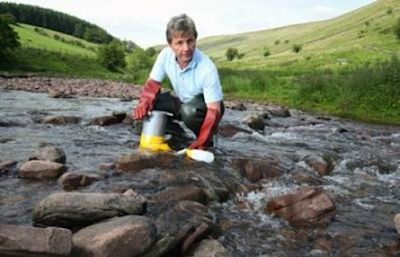
Britain’s 2,300 urban rivers are the cleanest they’ve been in over two decades, according to a 21-year study that measured the presence of clean-river invertebrates – a yardstick for river health – which during the days of heavy industry and poor sewage treatment had declined considerably, but now appear to be making a comeback.
Although climate change has warmed British rivers by around 1-2 degrees Celsius (3-6 °F) over recent decades, the findings from Cardiff University suggest that improved pollution control has managed to offset its damaging effects on river ecosystems.
Dr Ian Vaughan and Professor Steve Ormerod from the School of Biosciences analyzed changes in the occurrence and spread of insects, snails and other mini-beasts from major rivers between 1991 and 2011.
The researchers then asked whether water quality, temperature, or river flow best explained the biological changes they observed. Overwhelmingly, these trends were explained by reductions in gross pollution rather than warming or changing flow caused by climate change.
Improving water quality has allowed some clean-water organisms from upland rivers to return to previously polluted lowland rivers, and may even explain some northwards movement previously attributed to climate-change.
 The researchers believe these results to be very encouraging in showing how reductions in pollution can help offset climate change impacts.
The researchers believe these results to be very encouraging in showing how reductions in pollution can help offset climate change impacts.
Dr Ian Vaughan said: “Our analysis showed clearly that many British river invertebrates are sensitive to climate – for example; because they require good supplies of oxygen that decline as rivers warm up. However, it seems that efforts over the last 2-3 decades to clean up pollution from sewage and other sources have allowed many of these sensitive organisms to expand their range despite warming trends and several periods of drought.”
(Source: Cardiff University)



















